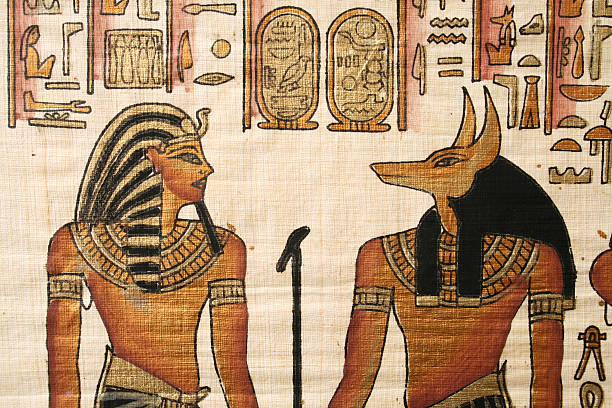Divine Protectors and Creators of Ancient Egypt
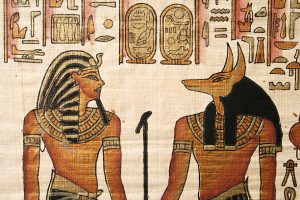
The Goddess Isis
Isis is the daughter of Geb, the wife and sister of Osiris, and the mother of Horus. Her name signifies “Queen of the Throne.” She played a significant role in ancient Egyptian mythology, revered as a goddess of magic and motherhood. She is renowned for reassembling the dismembered body of her husband, Osiris, and bringing him back to life through her magical powers. As the mother of Horus, she became a symbol of motherhood. A pivotal tale in Egyptian mythology highlights Isis’ role in the creation of humanity. When the god Ra grew old, he became weary of humanity and sent Sekhmet, the fierce lion-headed goddess of destruction, to punish them. Sekhmet slaughtered countless humans, becoming the first recorded vampire. Despairing, humanity turned to Isis, the mother of gods and humans. She pleaded with Ra to spare humanity. Overwhelmed by her tears, Ra instructed her to create a crimson-colored beer and offer it to Sekhmet. The goddess, intoxicated by the beer, fell into a deep sleep, allowing humanity to survive. In gratitude, the Egyptians believed that Isis’ tears gave birth to the Nile River. As a result, travelers, especially seafarers, carried amulets of Isis for protection. This belief contributed to the widespread veneration of Isis throughout the Mediterranean.
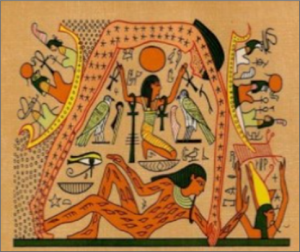
The Goddess Isis
The God Osiris
Osiris, the son of Geb and the husband of Isis, was the brother of Set and the father of Horus. The ancient Egyptians associated him with fertility, agriculture, and prosperity. After being murdered by his brother Set and resurrected by Isis, he became the ruler of the underworld, symbolizing the afterlife, resurrection, and eternity. In the Hall of Judgment, Osiris is depicted as the judge who weighs the hearts of the deceased. Those who have led virtuous lives are allowed to enter the afterlife, while the wicked are punished. Osiris is one of the most prominent deities in ancient Egyptian religion, often represented as a human figure wearing a crown and holding a scepter and an ankh (the symbol of life). He is frequently depicted in green, the color associated with rebirth and the afterlife
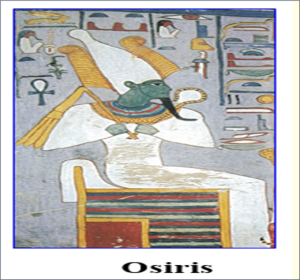
The God Horus
Horus is one of the most prominent deities in ancient Egyptian mythology. He is the son of Isis and Osiris and the avenger of his father, Osiris, who was murdered by his uncle Set. Horus reclaimed his father’s throne and became the protector of the Egyptian pharaohs. Every pharaoh in Egypt was considered a son of Horus. Horus is often depicted as a falcon-headed man. The falcon was chosen as his symbol for several reasons. Not only does the falcon soar high in the sky and hunt other creatures, but it also has the unique ability to stare directly at the sun without blinking. This ability made it a fitting symbol for Horus, the god of the sky. Horus is considered the god of the sky and war. He represents the royal power of the pharaohs. The Eye of Horus The right eye of Horus symbolizes the sun, while the left eye represents the moon. In the myth, Set injured Horus’ left eye, but the god Thoth restored it. The Eye of Horus became a powerful symbol of protection and healing for the ancient Egyptians. It was often used as a protective amulet and was incorporated into various aspects of Egyptian life, including mathematics and medicine. Centers of Worship The most famous temple dedicated to Horus is the Temple of Edfu. Additionally, Horus was married to Hathor, the goddess of love, beauty, and joy. Their wedding is depicted in the temples of both Edfu and Dendera
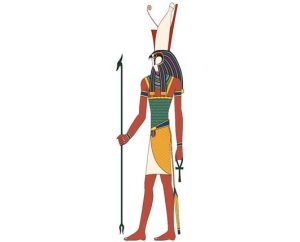
Picture of The God Horus
The God Amun
Thebes, the ancient capital of Egypt, was the primary domain of the god Amun. Over time, he became unified with the sun god Ra, forming the powerful deity Amun-Ra. His family consisted of a triad: Amun himself, his wife Mut, and their son Khonsu. Amun possessed magnificent temples in Karnak. King Ahmose famously carried a golden statue of Amun into battle against the Hyksos, and upon his victory, it became a tradition for Egyptian pharaohs to construct temples or monuments at Karnak. Depicted as a god of fertility, Amun was often portrayed as a man wearing a pleated kilt with an erect phallus or as a ram. This association with rams is evident in the Rams Road at Karnak. The name ‘Amun’ means ‘the hidden one’ or ‘the secret,’ and its derivative ‘Amen’ has become a universal in many languages worldwide.”
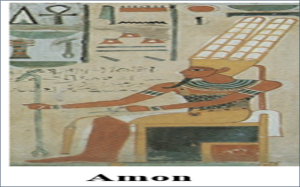
Bes: Bes was the ancient Egyptian god of mirth, music, and protection. He was considered a guardian of children, pregnant women, Protectors of the sleepers- protectors of the livings and the dead. Bes was often depicted as a dwarf-like figure with a large head, protruding ears, and a potbelly. His facial expression was a unique blend of laughter and ferocity. Bes was associated with musical instruments, which were believed to ward off evil spirits and bring joy to people. He was frequently shown holding snakes, knives, or swords, which were symbolic of his protective powers. These dangerous objects were thought to shield pregnant women from harm during childbirth and protect sleepers from nightmares. Some of the most famous depictions of Bes can be found in the temples of Edfu, Philae, and Dendera.
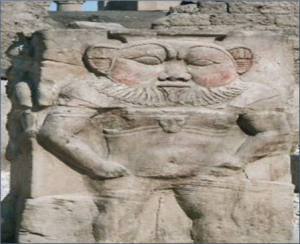
The god Bes
The god Thoth (or Tehuti)
Thoth was the ancient Egyptian god of the moon, wisdom, knowledge, and writing. He was often depicted as a man with the head of an ibis. Another common representation of Thoth was as a baboon holding a papyrus scroll and a stylus. As the patron of writing, Thoth oversaw all written communication, from royal decrees in temples to everyday records. He was closely associated with the god Horus, as he was credited with restoring Horus’s eye. Thoth also played a crucial role in the Hall of Judgment in the afterlife, where he recorded the hearts of the dead(their good and bad actions). He was considered the master of the House of Life, where the secrets of knowledge and wisdom were kept.
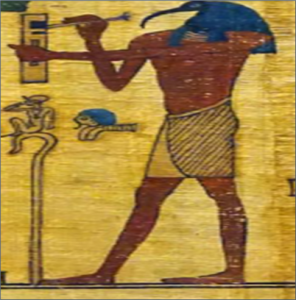
The god Thoth (or Tehuti)
Goddess Hathor
Hathor was the ancient Egyptian goddess of joy, music, dance and motherhood. She was often depicted as a beautiful woman wearing a headdress adorned with the horns of a cow and the sun disk. Hathor was closely associated with music and dance, as evidenced by the sistrum, a musical instrument shaped like a rattle, which was sacred to her. She was often depicted playing a sistrum at the birth of a child, symbolizing the joy and happiness that comes with new life and to create a joyful atmosphere. The image of the Seven Hathors, who presided over the birth of a child, is a well-known motif in Egyptian art. Hathor was widely worshipped throughout Egypt and was associated with many temples. The Hathoric columns, which were topped with the head of Hathor, were a common architectural feature in Egyptian temples, such as those at Hatshepsut’s temple and Dendera.
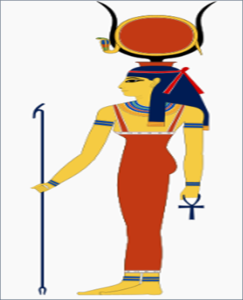
Goddess Hathor

